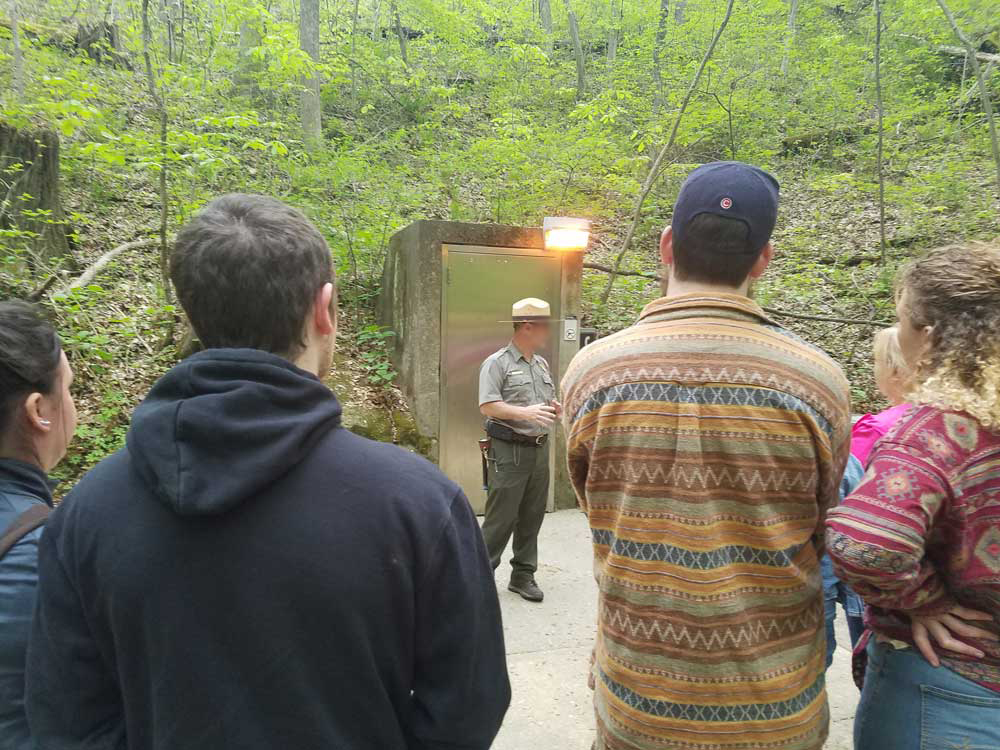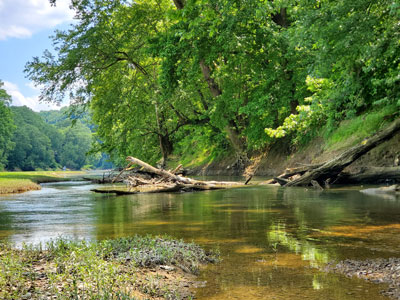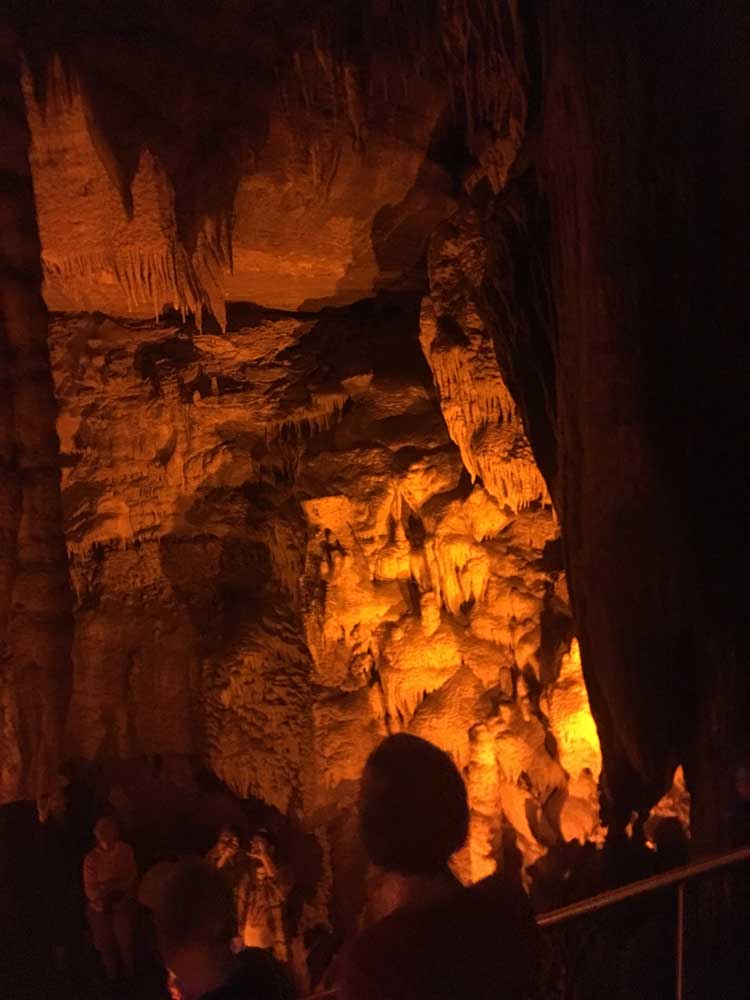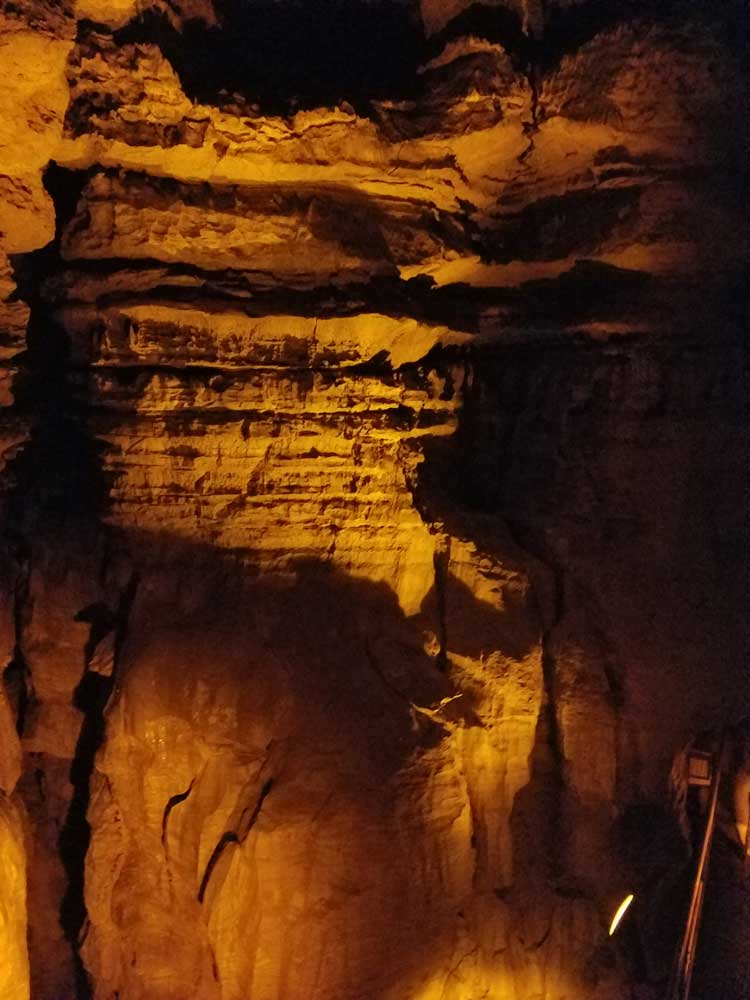World's longest known cave system with more than 400 miles (640 km) of surveyed passageways
General Information
Cave tours run from 9am to 3:30pm
Pets are allowed on all surface trails in the park
From Nashville (88mi) Follow I-65 N to KY-255/Mammoth Cave Pkwy in Park City. Take exit 48 from I-65 N. Follow KY-255/Mammoth Cave Pkwy to KY-70 W in Edmonson County
Since the 1972 unification of Mammoth Cave with the even-longer system under Flint Ridge to the north, the official name of the system has been the Mammoth-Flint Ridge Cave System. The park was established as a national park on July 1, 1941, a World Heritage Site on October 27, 1981, and an international Biosphere Reserve on September 26, 1990.

The park's 52,830 acres (21,380 ha) are located primarily in Edmonson County, with small areas extending eastward into Hart and Barren counties. The Green River runs through the park, with a tributary called the Nolin River feeding into the Green just inside the park. Mammoth Cave is the world's longest known cave system with more than 400 miles (640 km) of surveyed passageways, which is nearly twice as long as the second-longest cave system, Mexico's Sac Actun underwater cave.
Mammoth Cave developed in thick Mississippian-aged limestone strata capped by a layer of sandstone, which has made the system remarkably stable. It is known to include more than 400 miles (640 km) of passageway. New discoveries and connections add several miles to this figure each year. Mammoth Cave National Park was established to preserve the cave system.
The upper sandstone member is known as the Big Clifty Sandstone. Thin, sparse layers of limestone interspersed within the sandstone give rise to an epikarstic zone, in which tiny conduits (cave passages too small to enter) are dissolved by the natural acidity of groundwater. The epikarstic zone concentrates local flows of runoff into high-elevation springs which emerge at the edges of ridges. The resurgent water from these springs typically flows briefly on the surface before sinking underground again at elevation of the contact between the sandstone caprock and the underlying massive limestones. It is in these underlying massive limestone layers that the human-explorable caves of the region have naturally developed.
The National Park Service offers several cave tours to visitors. Some notable features of the cave, such as Grand Avenue, Frozen Niagara, and Fat Man's Misery, can be seen on lighted tours ranging from one to six hours in length. Two tours, lit only by visitor-carried paraffin lamps, are popular alternatives to the electric-lit routes. Several "wild" tours venture away from the developed parts of the cave into muddy crawls and dusty tunnels.
The cave's name refers to the large width and length of the passages connecting to the Rotunda just inside the entrance. The name was used long before the extensive cave system was more fully explored and mapped, to reveal a mammoth length of passageways. No fossils of the woolly mammoth have ever been found in Mammoth Cave, and the name of the cave has nothing to do with this extinct mammal.
This article uses material from the Wikipedia article "Mammoth Cave National Park", which is released under the Creative Commons Attribution-Share-Alike License 3.0
Featured Locations

Jeff P from Berkeley, CA, USA, CC BY 2.0, via Wikimedia Commons; Image Size Adjusted

